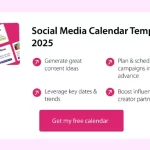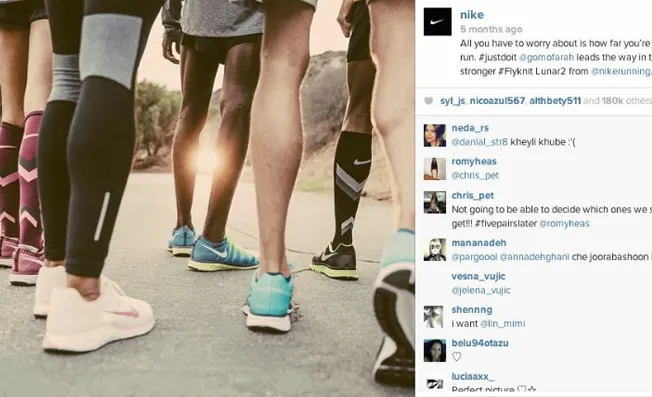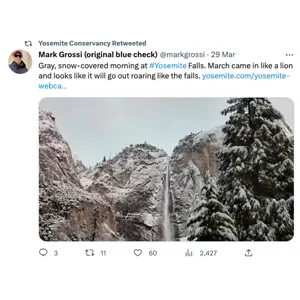4 Excellent Examples of User-Generated Content (UGC)
What is UGC?


Pro tip: Check out our case study, “Nike: Always Ahead of the Curve,” for a deep dive into the marketing strategies that keep this global brand at the forefront.
Why should you use UGC in your marketing?
User-generated content (UGC) is a powerful and cost-effective way to grow your brand while diversifying your content—something every busy marketer can appreciate.
Beyond efficiency, UGC aligns with shifting consumer preferences. Today’s buyers are drawn to brands that reflect their values and authenticity, making corporate social responsibility (CSR) more crucial than ever—especially for global companies.
More importantly, consumers crave real connections with the brands they support. Since UGC comes directly from people who engage with a business, it fosters a sense of trust and relatability.
Stat: According to Sprout Social, 57% of consumers spend more with brands they feel connected to, and 76% choose them over competitors.
At its core, UGC is modern-day word-of-mouth marketing—one of the most effective ways to build trust, strengthen relationships, and drive sales.
What’s the difference between UGC and influencer marketing?
It’s important not to confuse these two marketing tactics, as they differ in how they engage and communicate with your audience.
While user-generated content (UGC) is created organically—without payment—by customers, fans, or employees to share their experiences with your brand, influencer marketing involves sponsored content with a prearranged partnership.
For example, in an influencer campaign, you collaborate with an influencer or brand ambassador, discussing content types, posting schedules, captions, and hashtags in advance. This could involve a celebrity partnership, like reality star Ariana Madix teaming up with Duracell to capitalize on trending drama from Vanderpump Rules, or a micro-influencer who is well-known and active in your niche.
Types of UGC content
Customers and followers can promote your brand in various ways through user-generated content. Common types of UGC include:
-
Social media posts and shares
-
Customer reviews
-
Case studies
-
Referrals
-
Community forums
-
Webinars and podcasts
-
Conferences
-
Testimonials
Neil McKenzie, a tourism marketer for Yarmouth & Acadian Shores, shared insights on sourcing UGC in a DMI podcast:
“Some of the content we want to create requires us to encourage our operators to push quality content and remind their patrons to tag restaurants so we can feature them. Content creators see the value in being showcased, and it also supports local photographers and creatives who are looking to establish themselves.”
Sources of UGC content
When leveraging user-generated content, consider who you want to highlight. Are you showcasing your company culture, demonstrating exceptional customer service, or promoting a specific aspect of your brand?
Clarifying your goals will help you target the right audience when sourcing and sharing UGC.
1. Customer-generated content
Customer-generated content is one of the most influential forms of UGC.
According to the Local Consumer Review Survey 2024, 50% of consumers trust online reviews as much as personal recommendations from friends and family.
In today’s digital world, customers don’t make blind purchases—they research, compare, and seek real opinions before committing to a brand.
When done right, UGC not only builds trust but also acts as a powerful referral tool, driving new customers to your business.
She’s an everyday individual, not a professional marketer or influencer—and that’s exactly what makes this UGC so powerful.
This form of word-of-mouth marketing adds an extra layer of authenticity, credibility, and appeal, making it more relatable and trustworthy to potential customers.
A great example of this is a viral TikTok post from Megan Gilbert, featuring the breathtaking Admont Abbey library in Austria. The video attracted nearly 7 million views and over 31,000 comments, showcasing the immense impact of customer-generated content.
2. Employee-generated content
It’s an excellent way to highlight the human side of your brand, showcase the people behind it, and authentically represent your company culture.
3. Brand advocate content
Brands using UGC in a stand-out way
1. GoPro: Real-life action
A standout example of UGC comes from the tech and action camera giant, GoPro—and for good reason.
GoPro’s products are designed to naturally generate user content. As an action camera brand, it provides customers with the tools to capture and share their adventures effortlessly.
Every day, GoPro users upload around 6,000 videos featuring their experiences. The brand has even turned “GoProing” into a widely recognized term (and popular hashtag on X), reinforcing its tagline: “Be a Hero.”
Check out this amazing UGC example of a 5-year-old waterskiing for the first time—a perfect showcase of how GoPro fuels storytelling through its users.
GoPro actively encourages users to share their content by:
-
Using the #GoPro hashtag, making it easy for the brand’s social media team to discover and feature standout user content.
-
Showcasing top user-generated content across GoPro’s social media and online platforms.
-
Partnering with tourist attractions, offering visitors GoPro cameras to capture their experiences and encouraging them to share their footage.
-
Integrating social sharing directly into the cameras, allowing users to snap, edit, and share their content seamlessly.
-
Hosting competitions and events, such as the GoPro Awards, to motivate users to create and submit engaging content.
Even if your product or service isn’t inherently UGC-driven, you can still take inspiration from GoPro’s approach to encourage authentic customer engagement.
Tips to apply from GoPro
-
Identify what your product or service excels at and create a distinct emotional connection to your brand.
-
Develop creative ways to showcase these experiences and company culture on social media.
-
Encourage audience participation by inviting them to engage with your product or service and become part of your global community.
-
Boost engagement with incentives like challenges or competitions.
-
Collaborate with like-minded individuals or brands that share your values to amplify reach and co-promote effectively.
2. Doritos: Get competitive
The popular chip brand Doritos gained massive brand awareness through its #CrashtheSuperBowl contest.
This campaign invited fans to create their own Super Bowl ads, challenging them to outshine the brand’s own marketing efforts. The winning entry had the chance to be aired during the Super Bowl, along with a $1 million prize.
“When Doritos first launched this campaign nearly 20 years ago, it was groundbreaking, giving fans an unprecedented level of creative control and ownership of our brand – on the biggest advertising stage of the year,” said Tina Mahal, Senior VP of Marketing at PepsiCo Foods North America. “We still believe that the best ideas come from bold risks and championing our fans. With today’s easy access to creative tools, we can’t wait to see what they bring to the table.”
One standout entry was ‘Goat 4 Sale,’ a finalist video that showcased the creativity and humor the campaign inspired.
Tips to apply from Doritos
- Leverage a major or local event to connect with your audience and encourage them to create content.
- Come up with a compelling and memorable hashtag for your campaign, incorporating a popular event or relevant topic.
- Provide an enticing incentive, such as a premium product or free subscription, to motivate participation.
- Produce engaging sample content that sparks creativity and inspires fans to share their own on social media.
3. Yosemite Conservancy: Prompt memories
Nowadays, a captivating photo always stands out.


The collected UGC was then featured across various platforms, including emails, the website, publications, social media, and other communications. Additionally, all participants who submitted their stories were entered into a random drawing to win a Yosemite Conservancy swag bag.
Tips to apply from Yosemite Conservancy
- Gather your team to identify what sets your brand apart—whether it’s strong community engagement or even your lovable office dog!
- Plan how to visually capture these unique qualities through compelling photography.
- Share high-quality, professional images on social media alongside your brand message for a few weeks to build awareness.
- Kick off a giveaway by encouraging followers to share photos that reflect the same theme, tagging your company in their posts for a chance to win.
4. Apartment Therapy: Focus on the user, not the brand
Apartment Therapy, a lifestyle blog and publishing company specializing in home design and decor, is dedicated to helping people create happy, healthy living spaces.
On Instagram, the brand encourages followers to join The Apartment Therapist Community, where home enthusiasts can connect, ask design-related questions, showcase their spaces, and engage with editors.
Additionally, Apartment Therapy invites users to submit their homes for virtual tours and hosts interactive challenges like the popular #SmallCoolChallenge.

Tips to apply from Apartment Therapy
- Your UGC doesn’t have to center around your product or service—it’s about the experience it creates.
- Even if your brand serves a niche market, you can still foster strong engagement.
- Develop a distinct brand personality on social media that invites users to share their stories with you.
- Encourage content submissions and meaningful interactions. Focus on building a genuine community.
UGC campaign round-up
As these examples show, UGC can benefit brands across various industries.
The secret lies in understanding how people interact with your brand and inspiring them to share their experiences.
Get creative and explore ideas from all corners of your business—you never know where the next viral moment might come from. Just look at Duolingo’s owl mascot, which has attracted nearly 14 million TikTok followers!
